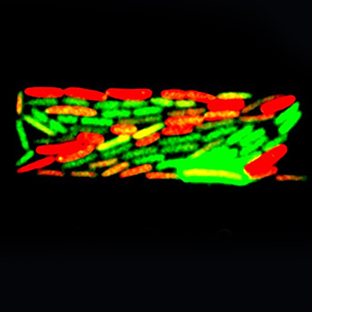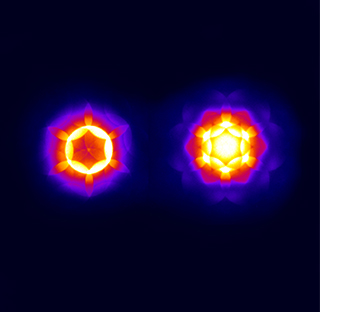
Concentrations
AEP has been a leader in integrating the physical sciences, life sciences, and engineering at Cornell for over 60 years.
Students in the Applied and Engineering Physics programs at Cornell University may pursue thesis research in any one of several broad areas, including:

Biophysics
Biophysicists look at biological systems, ask how their structure and function are explained by the laws of physics, and then apply physical methods to understand biological structure and function. Research on molecular mechanisms of fundamental biological processes and of biomedical diagnostics is pushing the limits of physics. Several faculty members in the graduate field of applied physics and their research groups have strong research and teaching activities in biophysics. These groups have also developed interdisciplinary collaborations with Cornell faculty, both in Ithaca and at Weill Cornell Medical College, as well as with other groups worldwide.
Condensed Matter and Materials Physics
Research topics in this diverse area range from innovative studies of the basic properties of condensed-matter systems to the nanofabrication and study of advanced electronic, optoelectronic, spintronic, and quantum-superconductor devices.
 Nanoscience and Nanotechnology
Nanoscience and Nanotechnology
Nanoscience, the behavior of physical systems when confined to near atomic, nanoscale (< 100 nm) dimensions together with the physical phenomena that occur at the nanoscale, is currently one of the most dynamic and rapidly developing areas of interdisciplinary research in applied physics.
Optical Physics, Quantum Electronics, and Photonics
Applied Physics faculty members are engaged in other cutting-edge research efforts in optics including three-dimensional biomedical imaging and controlling individual solid-state spins at the nanoscale.
Atomic, Molecular, and Chemical Physics
Progress toward cleaner combustion, the development of surface catalysts, the microfabrication of layered semiconductors, the ultrasensitive detection of toxic emissions from hazardous waste incinerators, and the discovery of new corrosion-resistant materials exemplify the objectives of current research projects in Applied Physics that require a precise understanding of chemical reactions in the gas phase and on solid surfaces.
Renewable Energy
The need for future renewable sources of energy and ways to minimize consumption is leading to a growing emphasis on new concepts for the generation, storage, and transportation of energy. Cornell faculty are involved in developing a wide range of energy-related materials, such as photovoltaic materials, thermoelectrics, advanced battery materials, and catalysts, membranes and supports for mobile fuel cells. Research is also conducted on materials processing that minimizes environmental impact.
Astrophysics and Plasma Physics
Cornell’s research programs in planetary astronomy, infrared astronomy, theoretical astrophysics, and radio astronomy are internationally recognized. Plasma physics is the science of electrically conducting fluids and high-temperature ionized gases. While the best-known research impetus is controlled fusion as a potential source of electric power, plasma physics also underlies many solar, astrophysical, and ionospheric phenomena as well as industrial applications of plasmas.

